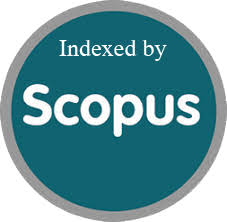6G Mobile Communication Performance Enhancement Using Cooperative NOMA and Caching
Abstract
Mobile communication networks in 6G with emerging applications and standards introduce demands for an increasingly intelligent network, smart services based on the Internet of Everything (IoE), extremely low latency, fast network connection, lower power, and support for a large number of different communication services. These demands require advanced techniques to improve and enhance the performance and efficiency in the 6G mobile communication network systems. The paper proposed a technique that combines C-NOMA with caching as a dynamic resource allocation among users and relay nodes is used to enhance and optimize performance and efficiency of 6G mobile communication networks. The results have shown promise in maximizing throughput, minimizing latency, and optimizing resource efficiency. Caching reduces access latency and network congestion by making use of the idea of keeping frequently requested content closer to users. Through dynamic adjustments to user clustering and resource distribution within clusters, the system may maximize utilization of resources and reduce interference, resulting in enhanced system efficiency and performance. The simulation results with the aid of MATLAB (V 2022a) demonstrate the enhancements of 6G mobile communication networks achieved by C-NOMA with caching compared to all systems through the improvement in latency, sum rate, and throughput the investigation of different cases of 6G mobile communication networks environments and compared with the same cases in traditional NOMA.
References
- A. ALKandari, M. ALAhmad, N. J o. E. S. ALAwadi, and Technology, "Overview on 5G and 6G WirelessS Communication with IOT Technology," jestec.taylors.edu.my, vol. 17, no. 1, pp. 0095-0105, 2022.
- A. Nauman et al., "Dynamic resource management in integrated NOMA terrestrialsatellite networks using multi-agent reinforcement learning," Elsevier, vol. 221, p. 103770, 2024.https://doi.org/10.1016/j.jnca.2023.103770
- D. Bepari et al., "A survey on applications of cache-aided NOMA," ieeexplore.ieee.org, 2023.DOI: 10.1109/COMST.2023.3293231
- D. Bepari et al., "A survey on cache-aided NOMA for 6G networks," dclibrary.mbzuai.ac.ae, 2022.DOI: 10.48550/arXiv.2205.05321
- K. Shen, "Non-orthogonal multiple access with wireless caching," University of Manchester, pure.manchester.ac.uk , 2023.
- L. Mastrodicasa, "Caching through aerial platforms for 6G Networks," Politecnico di Torino, webthesis.biblio.polito.it , 2022.URI: http://webthesis.biblio.polito.it/id/eprint/25536
- M. Alsabah et al., "6G wireless communications networks: A comprehensive survey," ieeexplore.ieee.org, vol. 9, pp. 148191-148243, 2021.DOI: 10.1109/ACCESS.2021.3124812
- M. Banafaa et al., "6G mobile communication technology: Requirements, targets, applications, challenges, advantages, and opportunities," Elsevier, vol. 64, pp. 245-274, 2023.https://doi.org/10.1016/j.aej.2022.08.017
- M. Elhattab, "A Comprehensive Study of Multiple Access Techniques in 6G Networks," Concordia.University, spectrum.library.concordia.ca , 2022.
- M. W. Akhtar et al., "The shift to 6G communications: vision and requirements," Springer, vol. 10, pp. 1-27, 2020.https://doi.org/10.1186/s13673-020-00258-2
- M. Z. Asghar, S. A. Memon, and J. J. S. Hmlinen, "Evolution of wireless communication to 6g: Potential applications and research directions," mdpi.com, vol. 14, no. 10, p. 6356, 2022.https://doi.org/10.3390/su14106356
- P. Jain, A. Gupta, N. Kumar, G. P. Joshi, and W. J. S. Cho, "Performance evaluation of cooperative OMA and NOMA systems in 6G deployment scenarios," mdpi.com, vol. 22, no. 11, p. 3986, 2022.https://doi.org/10.3390/s22113986
- R. Moreira and F. de Oliveira Silva, "Towards 6g network slicing," in Anais do I Workshop de Redes 6G, 2021, pp. 25-30: SBC, sol.sbc.org. b.
- R. O. Ogundokun et al., "Non-orthogonal multiple access enabled mobile edge computing in 6G communications: A systematic Literature Review Sustainability 2023, 15(9), 7315.https://doi.org/10.3390/su15097315
- S. Majumdar, et al, "Improving Scalability of 6G Network Automation with Distributed Deep Q-Networks", ICC 2022 - IEEE International Conference on communications, 2022.DOI:10.1109/GLOBECOM48099.2022.10000643
- W. Guo, N. M. F. Qureshi, I. F. Siddiqui, D. R. J. o. K. Shin, and I. Sciences, "Cooperative communication resource allocation strategies for 5G and beyond networks: A review of architecture, challenges and opportunities," Elsevier, vol. 34, no. 10, pp. 8054-8078, 2022.https://doi.org/10.1016/j.jksuci.2022.07.019
- W. U. Khan, F. Jameel, M. A. Jamshed, H. Pervaiz, S. Khan, and J. J. P. C. Liu, "Efficient power allocation for NOMA-enabled IoT networks in 6G era," Elsevier, vol. 39, p. 101043, 2020.https://doi.org/10.1016/j.phycom.2020.101043
- X. Peng, X Yuan and K Zhang, "Clustered NOMA-based downlink adaptive relay coordinatedtransmission scheme for future 6G cell-free edge network", Peer to Peer Networking and Applications, vol. 15, pages 612-625, 2022.DOI: 10.1007/s12083-021-01274-4
- Y. Shan, Q. Zhu, and Y. J. Wang, "Performance analysis on a cooperative transmission scheme of multicast and NOMA in cacheenabled cellular networks," Wiley Online Library, vol. 15, no. 7, pp. 946-956, 2021.https://doi.org/10.1049/cmu2.12133
- Y.-C. Liang, D. Niyato, E. G. Larsson, and P. J. C. C. Popovski, "Guest editorial: 6G mobile networks: Emerging technologies and applications," ieeexplore.ieee.org, vol. 17, no. 9, pp. 90-91, 2020.DOI: 10.23919/JCC.2020.9205979
- Z. Qadir, K. N. Le, N. Saeed, and H. S. e. Munawar, "Towards 6G Internet of Things: Recent advances, use cases, and open challenges," Elsevier, vol. 9, no. 3, pp. 296-312, 2023.https://doi.org/10.1016/j.icte.2022.06.006








